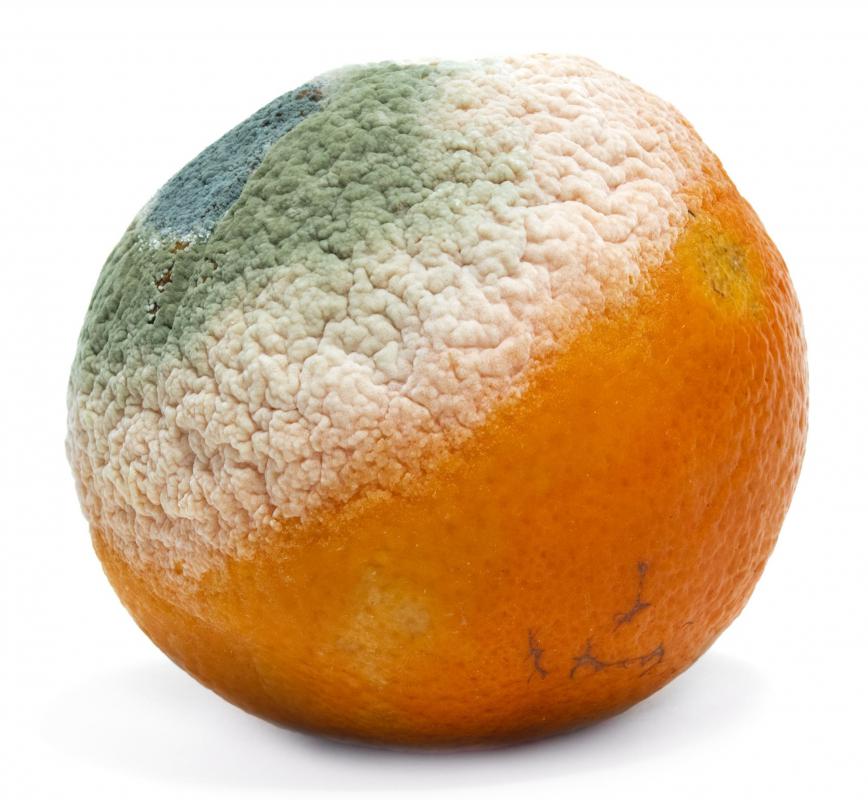At WiseGEEK, we're committed to delivering accurate, trustworthy information. Our expert-authored content is rigorously fact-checked and sourced from credible authorities. Discover how we uphold the highest standards in providing you with reliable knowledge.
How do I Know if I Am Allergic to Mold?
Mold is a type of fungus that is unlike plants or animals — it is a living organism that produces seeds, which are also called spores. Generally, mold spores are spread by the wind and there are certain times of the year when they are most prevalent. Most all humans inhale mold spores, but some people suffer with reactions to them — reactions to mold could indicate that a person is allergic to mold. Depending on the source of the mold, people can either suffer with symptoms temporarily or throughout the year.
Found indoors as well as out, mold grows on dead plants, rotting logs, and grasses. It does not die in the winter. Rather, it goes dormant and then returns in the spring by attaching itself to dead plants.

Although outdoor mold spores are mainly responsible for most mold allergies, people can also suffer with the symptoms from indoor contaminants. Mold thrives in warm, damp areas such as bathtubs, sinks, and around pipes. If a home is contaminated with mold, family members may become allergic to it due to daily contact with the mold spores.
A mold allergy will present with symptoms that are similar to those of the common cold. Generally, a person who is allergic to mold may have one or more of these symptoms, including a stuffed-up nose with congestion, itching on parts of the body, watery eyes, or a scaly rash that appears on the skin. The tiny mold spores can attach themselves to the inside lining of the nose and lungs, thereby causing more severe symptoms, such as a high fever or even asthma. Mold reactions can happen suddenly, but they also can be delayed.

To diagnose a mold allergy, a doctor typically will look over medical history and give the sufferer a complete physical examination. He or she usually will use different fungi extracts to determine if the patient is allergic to mold. By pricking the skin with these extracts, the doctor can look for a reaction. By combining the patient’s medical history, physical exam, and skin tests, he or she usually will be able to make an accurate diagnosis.

There are ways to prevent becoming allergic to mold. A person could remain indoors when the airborne mold spore count is high and keep bathrooms, basements, and kitchens well ventilated. Any leaky plumbing should be repaired and all rain gutters should be free of leaves or any other debris.
AS FEATURED ON:
AS FEATURED ON:
















Discussion Comments
I stayed in a house that had toxic mold in it and poor ventilation. doing so has given me severe skin and breathing problems that have wrecked my life. I am now registered disabled because of this. I cannot stress the dangers of toxic mold to health enough!
Post your comments